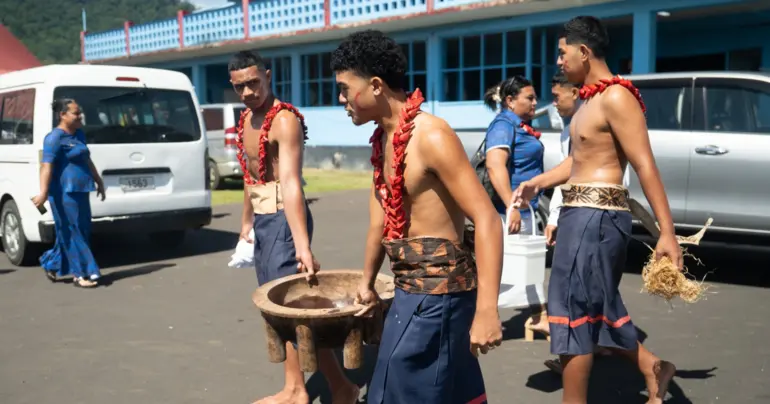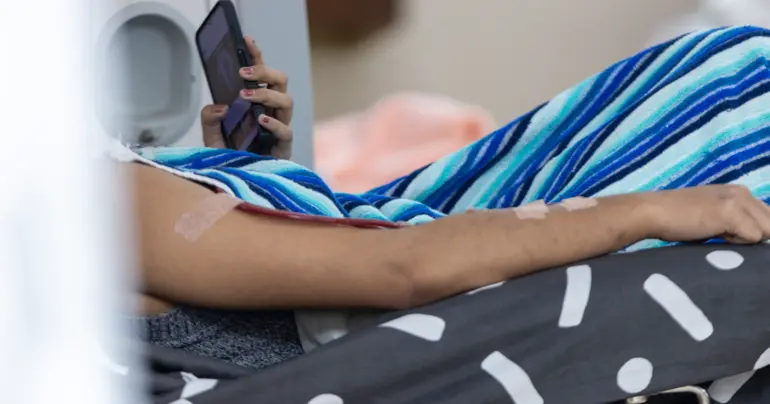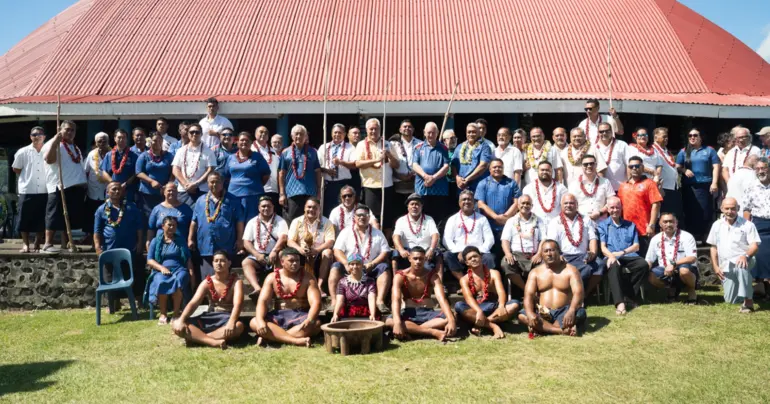METI: Benefits of Samoan cocoa to cardiovascular health
Earlier in this century, social anthropologists were studying the Kuna Indians living on the San Blas Islands off the Atlantic Coast of Panama.
To their surprise, they noted how healthy the Amerindian population was and how non-communicable diseases (NCD) like diabetes, heart disease and cancer were practically absent even in the older population groups.
It was soon identified that it was their lifestyle that kept the island Kuna healthy. Indeed, Kuna that travelled to the mainland and adopted the Western lifestyle eventually would develop NCD like the rest of the Panamanians that consumed the fatty, Western animal based diet…
What turned out to be dramatically different in the Kuna diet was that –besides following a mostly plant based diet- the Islanders consume more than 4 cups, or 30-40 ounces of a cocoa drink on a daily basis. To make their cocoa drink, the Kuna grind raw cocoa beans, straight out of the pod, which are then boiled with ripe bananas.
The mixture is then poured through a strainer, leaving behind the cocoa and banana solids. Because the beans are not fermented or roasted, Kuna cocoa contains all of the health benefits of the cocoa bean, with none of the cancer-causing substances (like acrylamide) that roasting of the cocoa generates.
Over the past twenty years research has identified that cocoa beans have the highest amounts of phytochemicals known as flavanols, foremost those called epicatechin, catechin, and procyanidins. It has been determined that Kuna cocoa beans provide 3 g of flavanols per 100 g of cocoa beans.
It is now more than 4 years ago that METI found out about the Kuna Indians’ ‘secret’ for a healthy life by drinking cocoa throughout the day. Since then we have been trying –unsuccessfully- to get funding from overseas donors for a project to determine the content of flavanols in the local cocoa beans.
Fortunately, last year the Scientific Research Organisation of Samoa (SROS) became interested in METI’s Koko Project and organised for samples of Samoan cocoa beans to be analysed for flavanols. What is remarkable about the SROS analysis results is that they showed that fresh, washed, Samoa cocoa beans provide nearly twice the amount of flavanols (5.7 g per 100 g of cocoa beans) compared to the Kuna cocoa beans! Sun dried, washed cocoa beans were found to contain 5 g of flavanols per 100 g of cocoa beans.
On the other hand, cocoa beans that had been roasted only retained 1.7 g of flavanols per 100 g of beans, dramatically showing how heating destroys the flavanols. It stands to reason that if Samoans would drink 4 cups of the ‘cocoa power drink’ similar to what the Kuna consume a day, it would help to combat the NCD epidemic that now affects so many of our people. The question next to be resolved was how many cocoa beans one should consume a day to have the health benefits mentioned. We’ll come to that a bit further in the Column, but first we want to shed light on how fresh or only sun-dried cocoa beans have such a beneficial effect on our health.
METI’s Koko project was conceptualised four years ago, after reading a scientific article ‘Cocoa, Blood Pressure and Vascular function’ by Valeria Ludovici and others in the issue of Frontiers in Nutrition of 2 August 2017.
The authors confirmed that the flavanols in the cocoa beans activate the production of Nitric Oxide, a gas, in the cells of the inner layer of the blood vessel walls (called ‘endothelial cells’), which causes the smooth muscle fibres situated in the middle layer of the blood vessel to relax, causing the blood vessels to dilate and in this way allowing more blood to reach vital organs like the heart muscle or the brain.
In addition, flavanols have been found to have antioxidant, and anti-inflammatory properties, which explain the additional beneficial effects of the flavanols at the cellular level throughout the body.
In summary then, how can we make a ‘Samoan Koko Power drink’ that ensures the full health benefits of the cocoa bean? First, ideally, one should use the beans straight out of the pod, but not everyone has cocoa trees growing in their backyard. The simplest solution is to buy the sun dried cocoa beans that are sold in the local markets as ‘pepa koko’.
Considering that the average cocoa bean weighs about 1 g and based on SROS’ analysis that sun-dried cocoa beans contain about 5 g of flavanols per 100 g of cocoa beans, one should consume daily a cocoa drink made from about 20 cocoa beans. In this way the amount of flavanols consumed would be around 1000 mg for sun-dried cocoa beans (and a bit higher for fresh cocoa beans).
The way we do it at METI is to soak the beans in hot water for a few minutes and then grind them in a power blender and dilute them in enough boiled water to make 3 or 4 cups of the cocoa drink, which can be kept in a thermos flask or in the fridge so that 1 cup of this ‘power cocoa drink’ can be consumed four times throughout the day (with a small amount of sugar to taste – as Samoans are used to).
Of course, if you want to get the fullest benefits of the Koko Samoa, you should follow the whole food plant based diet that we recommend, which will give you an extra dose of flavanols throughout the day. In this way, we believe the full potential of the Samoan cocoa to improve the cardiovascular health of Samoa’s population will be achieved. May you enjoy Samoan ‘koko’ to the fullest!
We invite you to visit METI’s Healthy Living Clinic at House No. 51 at Motootua (across from the Kokobanana Restaurant) and become acquainted with METI’s whole food plant based diet program. Or call us at 30550. Learning how to follow the WFPB nutrition might be your ‘game changer’!
Tags











